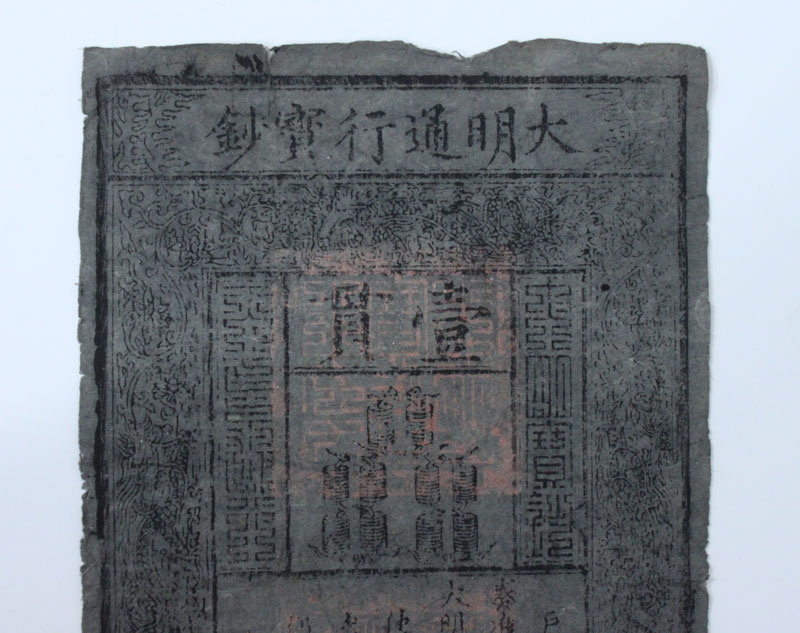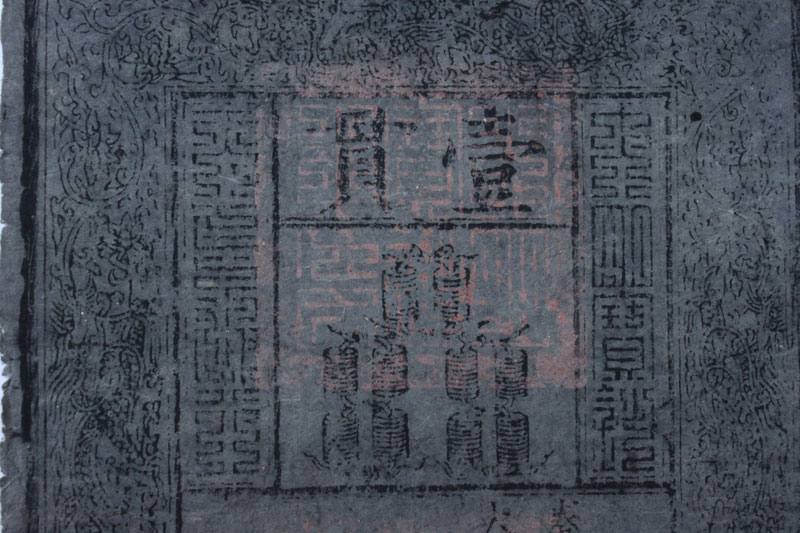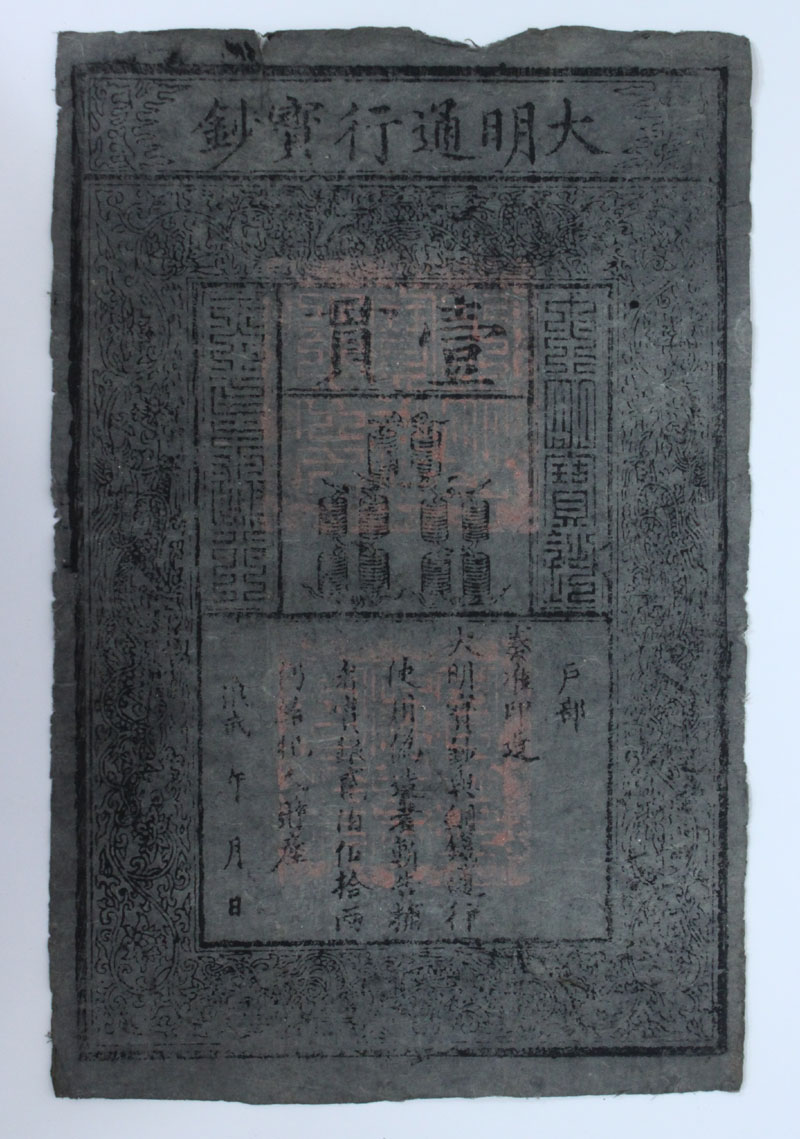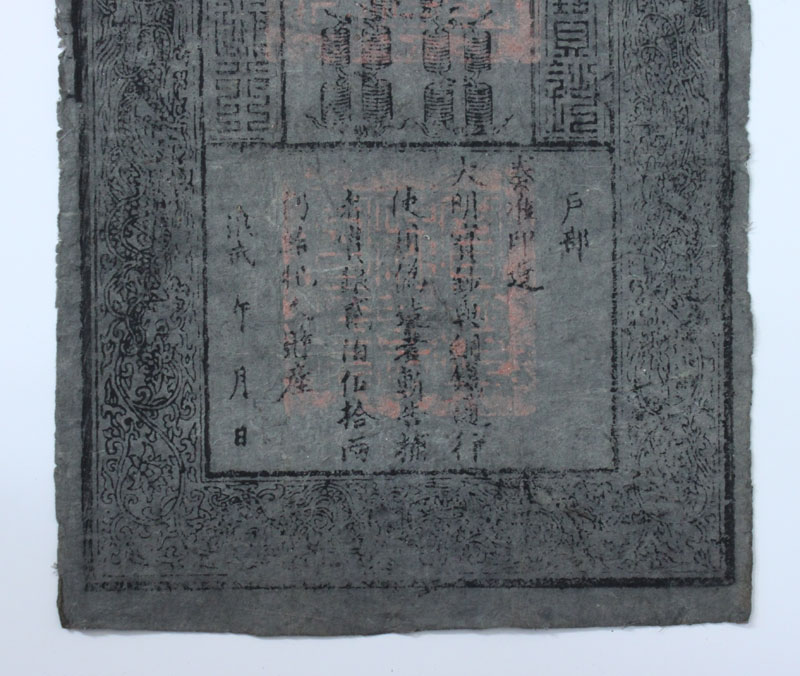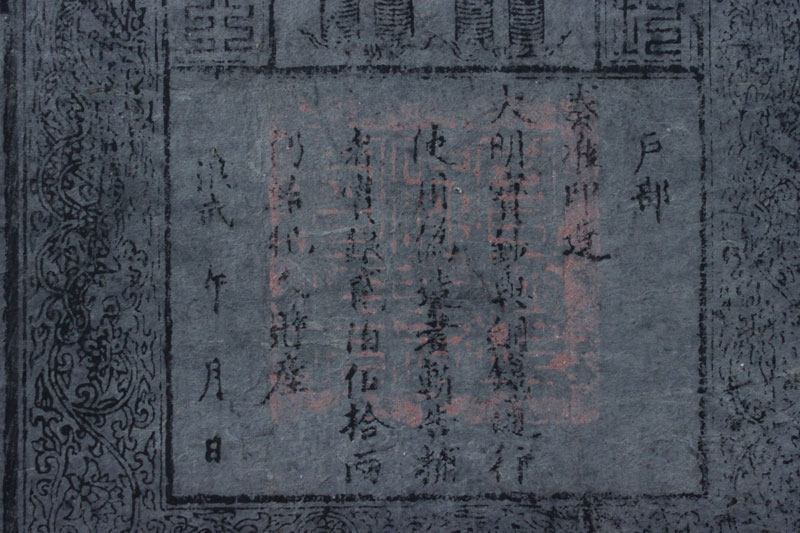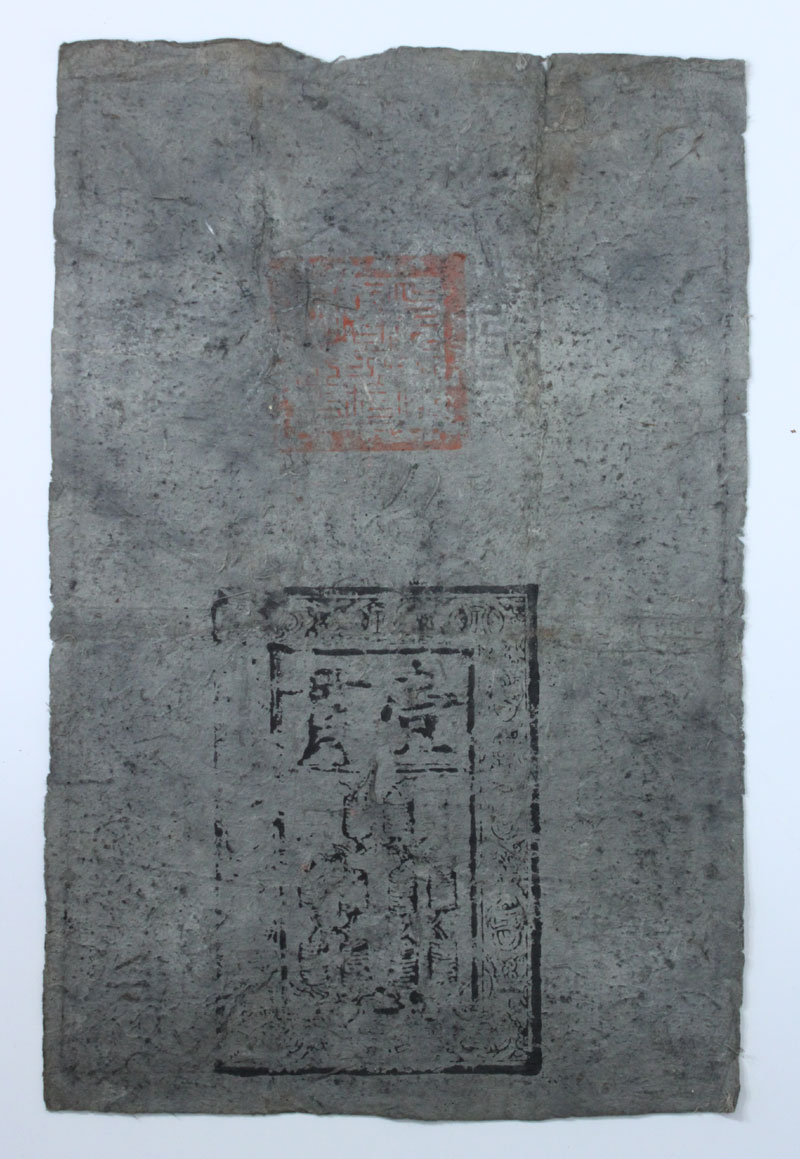TEST ITEM - A Chinese "Yi Guan (One Guan)" paper banknote, Ming dynasty
| Starting Bid: | £600.00 |
| Bid Increment: | £50.00 |
| Next Min Bid: | £650.00 |
| Buyer’s Premium: | £144.00 |
| Total Amount: | £744.00 |
| Number of Bids: | 0 |
| Location: | United Kingdom |
| Highest Bidder: | |
| Auction Start: | 23/10/19 00:00:00 UTC |
| Auction Ending: | 06/11/19 15:27:33 UTC |
| Auction Finished : | 06/11/19 15:48:32 UTC |
TEST ITEM - A Chinese "Yi Guan (One Guan)" paper banknote, Ming dynasty
A Chinese "Yi Guan (One Guan)" paper banknote, Ming dynasty
“大明通行宝钞”一贯纸币, 明代
of rectangular form, horizontally printed in black with large-sized characters "Great Ming General Ciculation Treasure Note" on the top, the large retangular area with characters "Yi Guan (1 Guan)" in the top middle, seal characters reading as "Great Ming Treasure Note" and "To Circulate Under the Heavens" on both sides, a pictorial representation of 10 strings of coins in the middle, a notice of the legal use of the Treasure Note instead of standard copper as well as the punishment of decapitation of making counterfeit banknotes by the Board of Revenue underneath, all within a stylised dragon pattern borders, with twin red government seal marks, the rear with a further red and a black seal
The issue of the paper banknote started from the Eighth year of Hongwu (1375) due to the lack of copper of making copper cash. There were six denominations of paper banknote in Ming dynasty, Yi (1) Guan, Wubai (500) Wen, Sibai (400) Wen, Sanbai (300) Wen, Erbai (200) Wen and Yibai (100) Wen. This Yi Guan paper banknote was equivalent to Yiqian (1000) Wen.
Paper bank notes or Jiaozi first appeared when China's economy volume reached new heights due to increased overseas trading and the fact the traditional copper or iron coins could not satisfy the demand of money circulation. However due to the problems with counterfeit money, a crime which was punishable by the death penalty, the Song government found a specialised government department to issue, print and authorise, cash and identify counterfeit banknotes. The department therefore made a particular type of special governmental seal to stamp on every paper money, usually in the centre of a money piece, so that people could easily identify real and counterfeit money. Bogus money usually lacked such stamped seals which were normally red or occasionally black or purple, or if they were stamped were of poor quality. The bona fide government seals were thus used as measures of authenticity on paper bank notes which were in general circulation throughout the Ming and Qing dynasties.
“大明通行宝钞” 纸币呈竖式长方形, 青色, 顶端横书“大明通行宝钞”, 下有龙纹花栏, 其中上端有“壹贯” 二字, 下有十串钱图样, 两旁篆书识为"大明宝钞” 及“天下通行”, 花栏下有楷字, 识为:户部奏准印造大明宝钞, 与铜钱通行使用, 伪造者斩, 告捕者赏银贰佰伍拾两, 仍给犯人财产, 洪武(某) 年(某) 月(某) 日
每钞一贯折钱一千文
"大明通行宝钞" 的发行乃因明初铜源不足而来, 于洪武八年(1375年) 发行。当时宝钞分六等, 分别为: 一贯、五百文、四百文、三百文、二百文、一百文, 此一贯能折钱一千文。其时政府严明钞法,严惩伪造纸钞者,并“禁民间不得以金银货物交易, 违者罪之”。此一贯纸币前后皆有官印,是为明政府为防止伪钞发行之举。
| Size: | 36.4cm high, 22cm wide |
| Weight: | |
| Date: | |
| Condition: | In good condition commensurate with age and with uneven edges from use |
| Estimate: | £1200 – 1800 |
